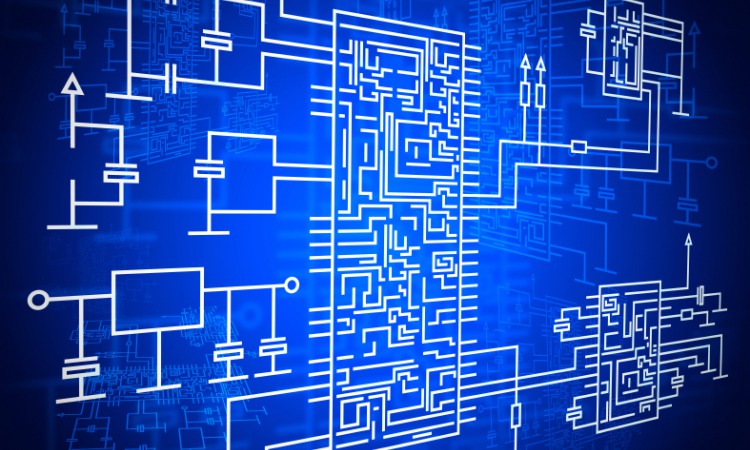Enhancing Industrial Electrical Design for Large-Scale Operations
Wiki Article
Innovative Electric Design Providers for Modern Framework
As city environments expand progressively intricate, incorporating innovations such as clever grids and renewable power resources becomes critical. These innovations not just promise to enhance power consumption but likewise foster strength versus future needs.Importance of Innovative Electric Design
Cutting-edge electrical design plays a vital duty in contemporary framework, affecting not just efficiency but likewise sustainability. As cities progress and the need for power rises, the demand for advanced electrical systems becomes paramount. These systems should not only meet present needs however also prepare for future development and technical innovations.A well-executed electric design can significantly reduce power consumption, consequently decreasing functional expenses and reducing environmental impact. By incorporating renewable power sources, such as solar panels and wind generators, ingenious designs can boost power independence and strength. Moreover, smart grid technologies enable for real-time tracking and monitoring of power distribution, maximizing performance and decreasing waste.
Security is another important element of electric design. Executing advanced technologies and strenuous standards can minimize dangers connected with electrical failings, guaranteeing a safe and secure atmosphere for organizations and locals alike. Furthermore, cutting-edge designs assist in versatility, permitting facilities to incorporate arising technologies perfectly.
Trick Fads in Electric Design
As the landscape of electrical design proceeds to develop, numerous essential patterns are forming the future of the industry. One considerable fad is the assimilation of wise innovation into electric systems. The proliferation of the Net of Things (IoT) has actually made it possible for real-time tracking and control of electric devices, improving efficiency and helping with predictive upkeep.Another fad is the growing emphasis on modular design. This strategy permits for flexible and scalable options, allowing infrastructure to adjust to altering requirements without comprehensive restorations. In addition, the use of sophisticated simulation tools and Building Details Modeling (BIM) is coming to be significantly prevalent, streamlining the design procedure and improving collaboration amongst stakeholders.
Additionally, improvements in products science are leading to the development of lighter, much more durable, and energy-efficient parts. This technology is especially important for high-performance buildings and framework jobs.
Lastly, there is a significant shift towards data-driven decision-making - industrial electrical design. Leveraging data analytics helps designers maximize systems for performance and cost-effectiveness. Together, these trends signify a transformative age in electrical design, enhancing capability, sustainability, and resilience in contemporary infrastructure
Lasting Energy Solutions
Lasting power options are increasingly coming to be an essential focus in electric design, showing a wider commitment to ecological duty and source efficiency. These solutions aim to minimize ecological effect while maximizing energy usage in numerous frameworks, from residential buildings to large industrial facilities.Among the primary approaches includes the integration of renewable resource sources, such as solar panels and wind generators, right into electrical systems. This not just reduces reliance on fossil gas however additionally improves power resilience. In addition, innovative power storage space systems, such as sophisticated batteries, enable efficient monitoring and distribution of energy, making sure that surplus energy created during peak production can be used throughout high demand periods.
Additionally, energy-efficient design practices are being adopted to enhance general system performance. This consists of utilizing energy-efficient illumination, cooling and heating systems, and wise building innovations that check and adjust power usage based upon occupancy and environmental problems.
Smart Grid Technologies
The execution of sustainable energy services normally brings about the expedition of smart grid technologies, which play a critical function in modernizing electrical systems. Smart grids utilize advanced communication technologies and data analytics to boost the integrity, efficiency, and sustainability of electricity distribution. By integrating digital modern technology with conventional grid framework, these systems assist in real-time surveillance, automated control, and improved decision-making capacities.Among the crucial features of smart grids is their capability to fit renewable resource resources, such as solar and wind power. This versatility not just reduces dependency on fossil gas but also allows for an extra decentralized energy production version. Additionally, wise grids allow need reaction programs, where customers can adjust their energy use based on real-time prices, thereby advertising power preservation and decreasing peak load demands.
In addition, smart grid technologies boost grid durability by enabling quicker recognition and resolution of failures, eventually decreasing downtime. With anticipating maintenance and analytics, utilities can maximize operations and boost service distribution. As cities and neighborhoods remain to advance, clever grid innovations are essential for developing a efficient and lasting electrical facilities that satisfies the demands of contemporary culture.

Future-Proofing Facilities
To guarantee long-term viability and flexibility, future-proofing infrastructure is crucial in the rapidly advancing landscape of electrical design services. As innovation developments and power demands change, it is critical that electrical systems are made with adaptability in mind. This involves incorporating scalable solutions that can accommodate future upgrades without demanding comprehensive overhauls.
In addition, sustainability should be a foundation of future-proofed styles. Using renewable resource sources, such as solar and wind, and maximizing power efficiency minimize dependency on fossil fuels, straightening with worldwide efforts to combat environment modification.
Final Thought
To conclude, cutting-edge electrical design solutions play a crucial role in shaping modern-day facilities. By focusing on sustainability, efficiency, and flexibility, these solutions deal with the progressing needs of energy systems. The combination of smart grid technologies and sustainable energy solutions improves strength and lowers functional costs. Future-proofing framework through sophisticated simulation devices and modular techniques makes certain that electric systems remain receptive to changing demands, eventually adding to a much more sustainable and energy-independent future.A well-executed electric design can dramatically minimize power usage, therefore lowering operational costs and minimizing environmental influence. By including eco-friendly power resources, such as solar panels and wind generators, innovative layouts can boost power self-reliance and resilience. Furthermore, ingenious power storage systems, such as electrical design services innovative batteries, make it possible for effective administration and circulation of power, ensuring that surplus power created during top manufacturing can be used during high demand durations.
Wise grids enable need action programs, where consumers can adjust their energy use based on real-time prices, thus advertising power preservation and lowering peak lots needs. (electrical load calculation)
As innovation developments and power demands shift, it is crucial that electric systems are designed with flexibility in mind.
Report this wiki page